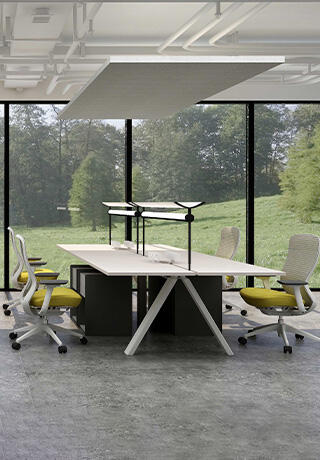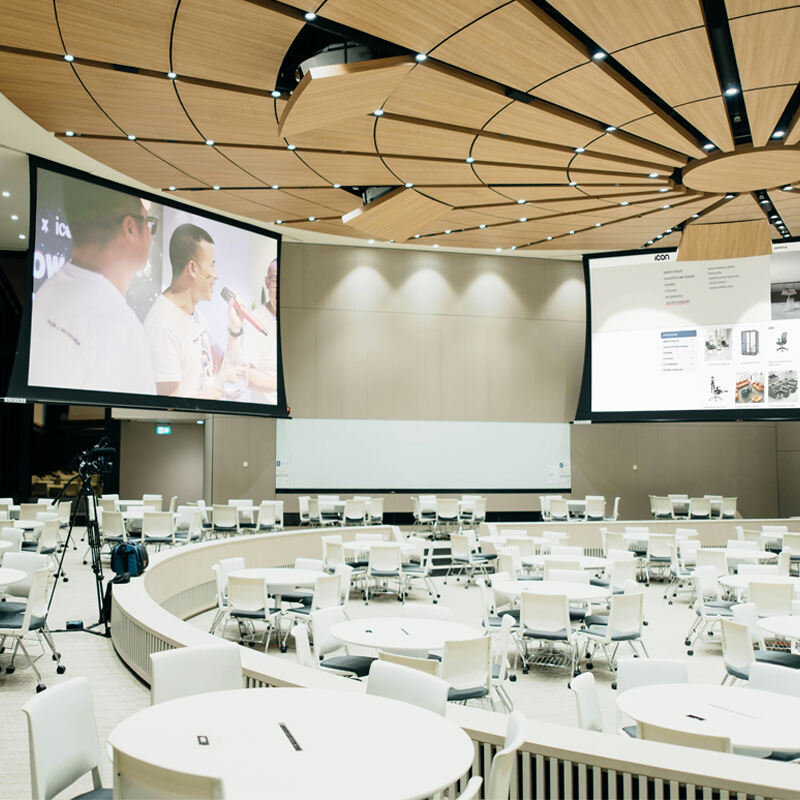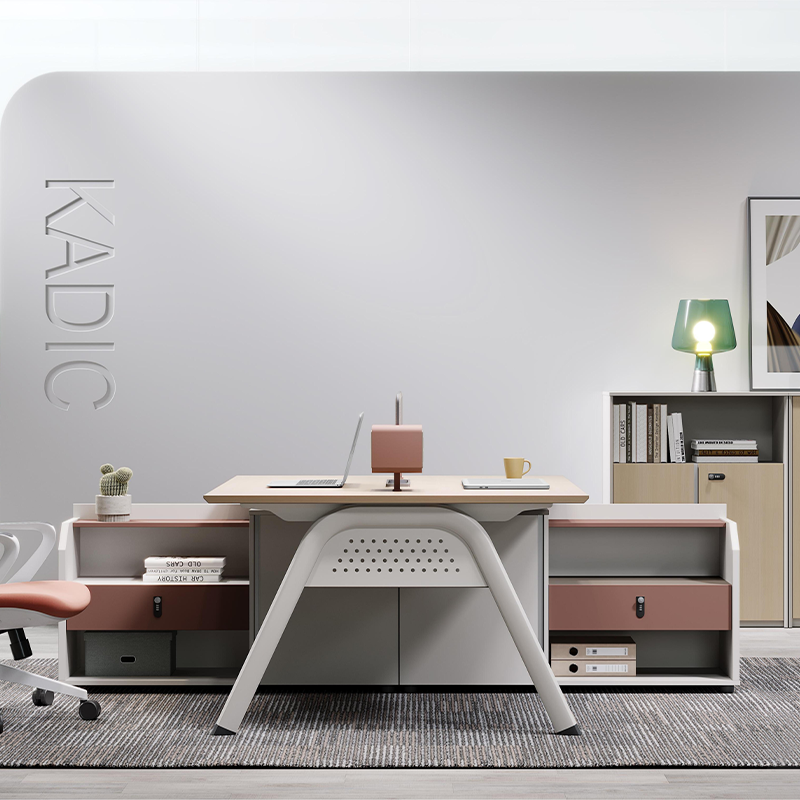Office relaxation zones—dedicated spaces for employees to unwind, recharge, or collaborate informally—have become essential in modern workplaces. These areas counteract the stress of desk-bound work, boosting morale and productivity. At the heart of effective relaxation zones is soft seating: plush, comfortable furniture like sofas, armchairs, bean bags, and modular cushions. Unlike rigid office chairs, soft seating is designed for comfort, making it a key element in creating inviting, functional relaxation spaces. Let’s explore how soft seating transforms these zones into havens of calm and connection.
Enhancing Physical Comfort and Reducing Stress
Soft seating prioritizes physical comfort, a foundational aspect of relaxation. Traditional office chairs, designed for posture support during focused work, can feel restrictive during downtime. Soft seating, by contrast, conforms to the body, reducing pressure on the spine, hips, and shoulders. For example, a deep-seated sofa with padded armrests allows employees to lean back, stretch, or even curl up—positions that signal the body to relax, lowering cortisol (the stress hormone) levels.
Ergonomically designed soft seating takes this further. Memory foam cushions, adjustable headrests, and lumbar support in soft seating pieces provide comfort without sacrificing spinal alignment, ensuring relaxation doesn’t come at the cost of posture. This physical ease encourages employees to stay in the relaxation zone longer, rather than returning to their desks prematurely due to discomfort. Over time, regular use of soft seating in relaxation zones can reduce chronic muscle tension, a common issue in office environments.
The tactile qualities of soft seating also play a role. Fabrics like velvet, knit, or microfiber invite touch, triggering sensory comfort that calms the nervous system. This sensory feedback—softness against the skin—creates an immediate sense of ease, making soft seating a powerful tool for quick stress relief during busy workdays.
Fostering Informal Collaboration and Connection
Relaxation zones aren’t just for solo downtime—they’re also spaces for casual interaction, and soft seating facilitates this naturally. Unlike formal meeting rooms with rigid chairs around a table, soft seating arrangements (e.g., a circular sofa, cluster of armchairs) encourage open conversation. Employees are more likely to share ideas, brainstorm, or problem-solve in a relaxed setting where soft seating reduces the formality of traditional workspaces.
Modular soft seating—pieces that can be rearranged into configurations like semicircles or small clusters—adapts to different group sizes. A team of three might gather on a sectional to review a project, while two colleagues can chat on adjacent armchairs. This flexibility makes relaxation zones multi-functional, supporting both collaboration and solitude. Soft seating’s low-key vibe also lowers social barriers, making introverted employees more likely to engage in casual discussions than in structured meeting spaces.
Research supports this: studies show that informal interactions in relaxed environments boost team cohesion and innovation. Soft seating in relaxation zones creates the perfect backdrop for these interactions, turning brief breaks into opportunities for connection that strengthen workplace relationships.
Boosting Mental Well-being and Productivity
Mental fatigue is a significant productivity killer, and soft seating in relaxation zones provides a mental reset. Taking short breaks in a space designed for relaxation—with comfortable soft seating—allows the brain to disengage from focused tasks, improving cognitive function when employees return to work. This is especially true for jobs requiring creativity or problem-solving, as relaxation enhances divergent thinking.

Soft seating also supports mindfulness and stress management practices. Employees can use these spaces for quick meditation, deep breathing, or even a short nap—activities proven to boost mental clarity. A plush armchair in a quiet corner of the relaxation zone offers a private retreat, while a larger sofa might host a guided meditation session. By making relaxation accessible, soft seating encourages employees to prioritize mental health, reducing burnout and increasing overall job satisfaction.
The impact on productivity is measurable: companies with well-designed relaxation zones report higher employee engagement and lower absenteeism. Soft seating is a key driver of this, as it makes relaxation zones appealing enough to be used regularly, rather than being ignored as unused "token" spaces.
Enhancing Aesthetics and Brand Identity
Soft seating plays a vital role in the visual appeal of office relaxation zones, making them inviting and reflective of company culture. Unlike generic office furniture, soft seating comes in a range of colors, textures, and styles, allowing companies to align the relaxation zone with their brand identity. For example, a tech startup might opt for vibrant, modular soft seating in bold hues to convey creativity, while a law firm could choose neutral-toned velvet sofas for a blend of comfort and professionalism.
Textures add depth to the space: a shaggy rug paired with linen armchairs, or a knit throw draped over a leather sofa, creates visual interest that feels homey and welcoming. This aesthetic warmth contrasts with the often sterile look of traditional offices, making relaxation zones feel like a "home away from home." Employees are more likely to use spaces that feel thoughtfully designed, and soft seating is central to this ambiance.
Soft seating can also incorporate brand elements, such as cushions in company colors or custom upholstery with subtle logo patterns. This integration reinforces brand values—whether innovation, comfort, or community—while making the relaxation zone feel intentional and cohesive with the rest of the office design.
Supporting Versatility and Inclusivity
Office relaxation zones need to cater to diverse employee needs, and soft seating’s versatility makes this possible. Different individuals prefer different ways to relax: some may want to stretch out on a sofa, others to sit upright with a book, and some to perch on a pouf while scrolling through their phone. Soft seating in various forms—sofas, armchairs, bean bags, floor cushions—accommodates these preferences, ensuring the relaxation zone is inclusive.
Inclusivity also means considering accessibility. Soft seating with low profiles (easy to get in and out of) or firm cushions supports employees with mobility issues, while wide sofas can accommodate those who need more space. By offering a range of soft seating options, relaxation zones become spaces where every employee feels comfortable, regardless of their physical needs or relaxation style.
This versatility extends to how the space is used throughout the day: a quiet morning might see employees reading on armchairs, while lunch breaks could bring groups to sectional sofas, and late afternoons might find individuals napping on plush cushions. Soft seating adapts to these changing needs, ensuring the relaxation zone remains functional from morning to evening.
FAQ: Soft Seating in Office Relaxation Zones
What types of soft seating work best in small relaxation zones?
Compact options like armchairs, loveseats, or floor cushions maximize space. Modular soft seating—pieces that stack or nest when not in use—are also ideal, as they can be rearranged for solo or group use without overwhelming the area.
How do you balance comfort and durability in soft seating for high-traffic relaxation zones?
Choose fabrics designed for durability, such as stain-resistant microfiber or performance velvet, which withstand frequent use. Opt for high-density foam cushions that retain their shape over time. Even with these features, soft seating can remain plush and comfortable—prioritize materials labeled "commercial-grade" for office settings.
Can soft seating in relaxation zones improve employee retention?
Yes. Employees value workplaces that prioritize their well-being, and a thoughtfully designed relaxation zone with comfortable soft seating signals that the company cares about their needs. This increases job satisfaction, making employees less likely to leave. A 2023 survey found that 78% of workers consider workplace amenities (including relaxation zones) when evaluating job offers.
How much space should be allocated to soft seating in a relaxation zone?
Aim for soft seating to occupy 60–70% of the relaxation zone, with the remaining space for tables, plants, or walking paths. A general guideline is 20–30 square feet per employee using the space at peak times. For example, a relaxation zone serving 10 people might need 200–300 square feet, with soft seating arranged to avoid overcrowding.
Should soft seating in relaxation zones match other office furniture?
It’s not necessary—relaxation zones should feel distinct from work areas to signal a shift in purpose. However, coordinating colors or design elements (e.g., using the same accent color as desk chairs) creates visual cohesion. The goal is to make the zone feel connected to the office while offering a clear break from workspaces.
Table of Contents
- Office relaxation zones—dedicated spaces for employees to unwind, recharge, or collaborate informally—have become essential in modern workplaces. These areas counteract the stress of desk-bound work, boosting morale and productivity. At the heart of effective relaxation zones is soft seating: plush, comfortable furniture like sofas, armchairs, bean bags, and modular cushions. Unlike rigid office chairs, soft seating is designed for comfort, making it a key element in creating inviting, functional relaxation spaces. Let’s explore how soft seating transforms these zones into havens of calm and connection.
-
FAQ: Soft Seating in Office Relaxation Zones
- What types of soft seating work best in small relaxation zones?
- How do you balance comfort and durability in soft seating for high-traffic relaxation zones?
- Can soft seating in relaxation zones improve employee retention?
- How much space should be allocated to soft seating in a relaxation zone?
- Should soft seating in relaxation zones match other office furniture?





